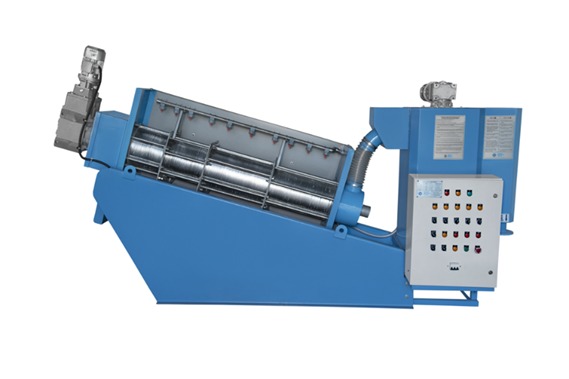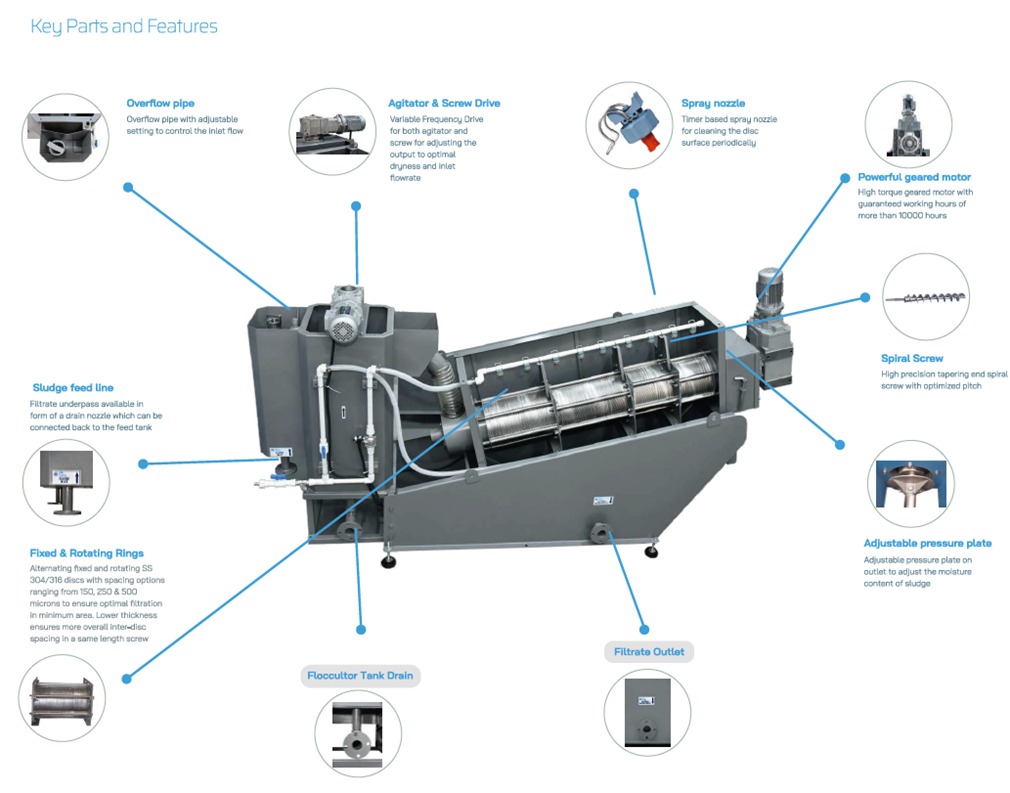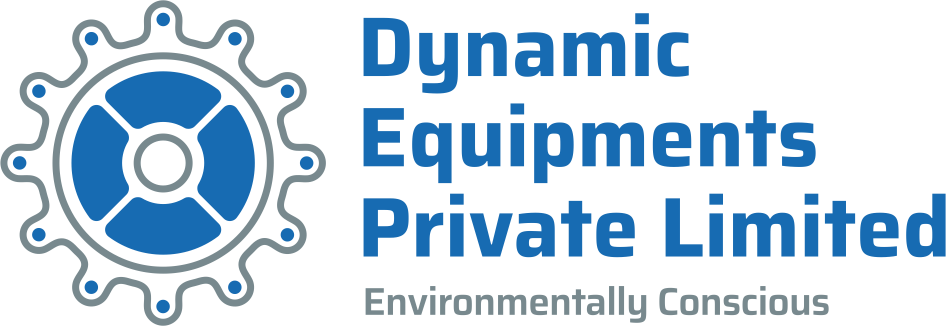Blog 1
WHICH SLUDGE DEWATERING EQUIPMENT TO CHOOSE ?
Recent times the industry has seen a significant increase in the cost of sludge and solid waste disposal primarily either due to higher surcharges due to moisture content or LOI value. From this the easiest to control parameters the moisture content. For this the industry is constantly seeking alternative technologies to economically dewater sludge for smooth operation of their wastewater treatment plants (ETPs & STPs)
There are 3 major technologies used for sludge dewatering commonly used in ETPs & STPs
- Poly propylene recessed plate filter press
- Decanter centrifuge
- Multi Disc Screw Press
From the various technologies available in the market, the most conventionally used is the PP cloth filter press or the decanter centrifuge. Both are now seen as either labour intensive (filter press) or high-power consuming & high maintenance (decanter centrifuge). More recently, a new technology which offers a continuous sludge dewatering operation with no labour requirement, very low power consumption and ultra-low maintenance is the Multi-Disc Screw Press technology developed in 1990s Japan and now matured into the most economically effective, simple and rugged sludge dewatering equipment.
In this article, we explore how the MDSP technology differs from the conventional on all operational fronts along with the economic feasibility assessment for replacement of old equipment.
WHY MULTI DISC SCREW PRESS ?
- The biggest advantage is power consumption which is 10 times less tan centrifuge and 3 times less than filter press
- Labour cost is very low compared to filter press as the operation is continuous, as there is no need to replace and wash filter cloth like PP filter press
- Compared to centrifuge and filter press, the screw press is more versatile and can handle variety of sludge compared to centrifuge and filter press
- Maintenance is very low compared to both centrifuge and filter press as the machine speed is low 4-6 rpm only
- Polyelectrolyte consumption in the screw press is much lower than the decanter centrifuge


A typical use case scenario of return-on-investment calculation for the multi disc screw press versus decanter centrifuge
| Return on Investment for 5 m3/hr @ 1% capacity | ||||
|---|---|---|---|---|
| Multi Disc Screw Press Vs Decanter Centrifuge | ||||
| Sr.No. | Parameters | Units | Multi Disc Screw Press | Decanter Centrifuge |
| 1 | Maintenance | - | Machine speed 6 RPM (Zero Maintenance) | Machine speed 4000-5000 RPM (High Maintenance, Greasing service required) |
| 2 | Motor Rating | Kw | 1.1 | 20 |
| 3 | Power Consumption @22 hours | Kwh | 24.2 | 440 |
| 4 | Cost of Electricity per Unit | Rs/Kwh | 8 | 8 |
| 5 | Cost of Electricity per day Operation | Rs/Day | 193.6 | 3520 |
| 6 | Capital Cost | Rs | 1,300,000 | 0 |
| 7 | Cost of Maintenance | Rs/year | 0 | 200,000 |
| 8 | Saving | Rs/Year | 1197920 | - |
| 9 | Payback Period | Year | 1.09 | - |

A typical use case scenario of return-on-investment calculation for the multi disc screw press versus decanter centrifuge
| Parameter | Multi Disc Screw Press | Centrifuge Decanter | PP Filter Press |
|---|---|---|---|
| Power Consumption | 1.1 kW | 15 kW | 5 kW |
| Maintenance Mechanical | Operated at only 4-6 RPM almost zero wear & tear; Complete built is in SS 304/316L | Operated at only 4000-5000 RPM with high chances of major wear & tear; Only water contact parts are in SS and rest non-contact portion is in MSEP | Replacement of cloth due to clogging. Build is generally MSEP thus high corrosion potential |
| Soil Content of dewatered sludge | 20-25% w/w solids (75-80% moisture) | 15-20% w/w solids (85-80% moisture) | 20-30% w/w solids (70-80% moisture) |
| CAPEX | 10% lower than the Decanter centrifuge typically | Highest cost in the category | Slightly lower than multi disc screw press, but considering auxiliaries like screw pump for feed at high pressure, the net cost is usually higher than the multi disc screw press |
| Recuring CAPEX | Almost Zero, 5-10% of the rings need to be changed every 4-5 years | Very high due to vibrations and also highly skilled manpower is required for regular preventive maintenance | Medium compared to decanter centrifuge however, the cloth efficiency need to be monitored regularly and the replacement might as to the regular CAPEX every 6-9 months |
| Chemical Cost | 50% of that from centrifuge when processing biological sludge | Highest requirement of polyelectrolyte | Almost same as the screw press, sometimes lower or none in case of primary chemical sludge |
| Noise & Vibration | No noise and vibration as all moving parts are at low RPM | Very high noise level | No noise and vibration as no moving parts are there |
| Labor Cost | No labour cost of manual handling of sludge as it is in continuous application | No labour cost of manual handling of sludge as it is in continuous application | Very high labour cost and labour intensive as the manual cleaning and the changing of cloth is required. Moreover, the sludge handling is also required to be manually which is also a health hazard |
